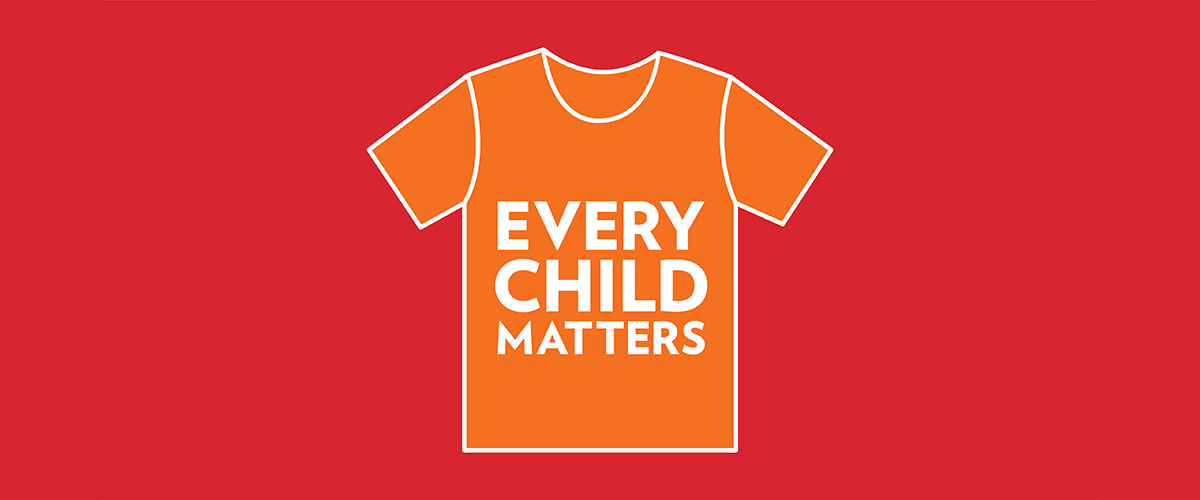September 30 is National Day for Truth and Reconciliation, also known as Orange Shirt Day. On this day, we wear orange shirts to honour and remember those children lost to Residential Schools, witness the healing journey of the survivors and their families, and commit to the ongoing process of reconciliation.
Indigenous children were forcibly removed from their families, and denied access to their culture, ceremonies, and languages. The impacts of Residential Schools have resonated through families and communities for generations.
Why do we wear orange shirts?
The inspiration for Orange Shirt Day came from residential school survivor Phyllis Jack Webstad, who shared her story of her first day of residential schooling at six years old, when she was stripped of her clothes, including the new orange shirt her grandmother bought her, which was never returned. The orange shirt now symbolizes how the residential school system took away the Indigenous identities of its students.
Where can I buy an orange shirt?
Here are a few Indigenous-owned or supportive places where you can purchase an orange shirt:
- Orange Shirt Day.net
- Moonstone Creation
- Aboriginal Healing Foundation
- Wanuskewin Gift Shop
- University of Alberta Bookstore
Please join us on September 30 to recognize National Day for Truth and Reconciliation.
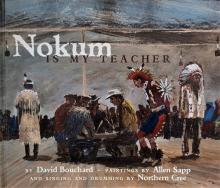
Storytime - Nokum is my Teacher by David Bouchard, and Phyllis's Orange Shirt by Phyllis Webstad
September 30, 11:30 am - 12 pm
The Roundhouse, RAM Main Floor
Join us for a reading of the books Nokum is my Teacher by David Bouchard, and Phyllis’s Orange Shirt by Phyllis Webstad.
Nokum is my Teacher is written as a dialogue between a young boy and his grandmother (Nokum). By sharing her teachings, Nokum guides her grandson to a new understanding of the larger world outside, while maintaining respect for the way of the people.
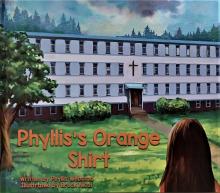
Do you know why we wear an orange shirt on September 30? When Phyllis Webstad turned six, she went to the residential school for the first time. On her first day at school, she wore an orange shirt that her grandmother had bought for her. On the very same day, her orange shirt was taken away from her and never returned. This is the true story of Phyllis and her orange shirt, and how that became a symbol of solidarity and remembrance of the Indigenous children forced to go to the residential schools.
These two books are appropriate for children aged 4-8 and their families.
This storytime will be held in the Roundhouse, located on the main floor of RAM, past the Admissions Desk and to the left. Please inquire at the Admissions Desk if you require assistance locating the space.
Virtual Storytime - Shi-Shi-Etko and Shin-chi's Canoe by Nicola Campbell
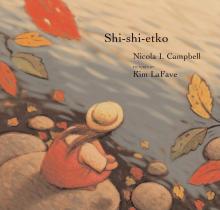
September 30, 10:30-11 am
Zoom and Facebook Live
Join us for a virtual reading of two books: Shi-Shi-Etko and Shin-chi's Canoe, both written by Nicola Campbell.
In the first book, we meet Shi-shi-etko, a young girl who has four days before she leaves home for residential school. Her family has many teachings to share with her, about her culture and the land.
In the second book, Shi-shi-etko is about to go back to the Residential School for her second year. This time, her little brother Shin-chi is going with her. The two siblings won’t see their family again until the salmon return in the summertime.
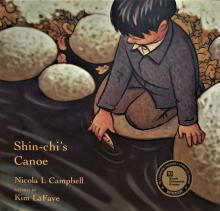
These books are appropriate for children aged 4-8.
This virtual storytime will be streamed on Zoom, and on the RAM Facebook page.
Register to join the Zoom presentation here.
Viewing table
September 30, 1-3 pm
RAM Lobby
Stop by the viewing table in the lobby to learn about Indigenous stories and objects from RAM’s Learning Collection. Visitors will have the opportunity to view objects up close, and ask questions to museum staff.
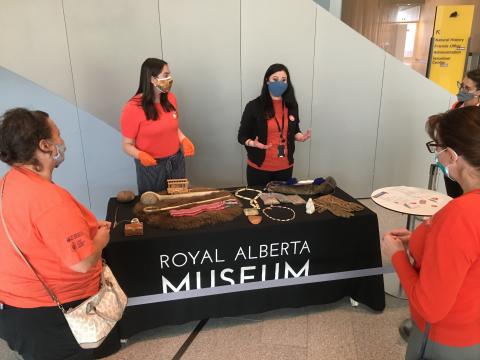
Keep learning
One of the recommendations that resulted from the Truth and Reconciliation Commission is that all Canadians educate themselves on the true history of Indigenous peoples on Turtle Island, so we’ve assembled a number of resources for you to keep learning:
Check out RAM staff’s recommended reading list for everything Indigenous! Our list includes everything from books to introduce your children to the history of residential schools, to understanding the Indian Act and Indigenous Rights.
Immerse yourself in the heritage, diversity and strength of Canada’s Indigenous Peoples. We’ve pulled together a list of resources for you to continue to learn about Indigenous Peoples in Alberta and Canada, past and present. We hope that you will continue to listen to their stories, read their words, marvel at their art, respect their history and culture, and recognize the long-standing Indigenous presence and sovereignty in this land.
